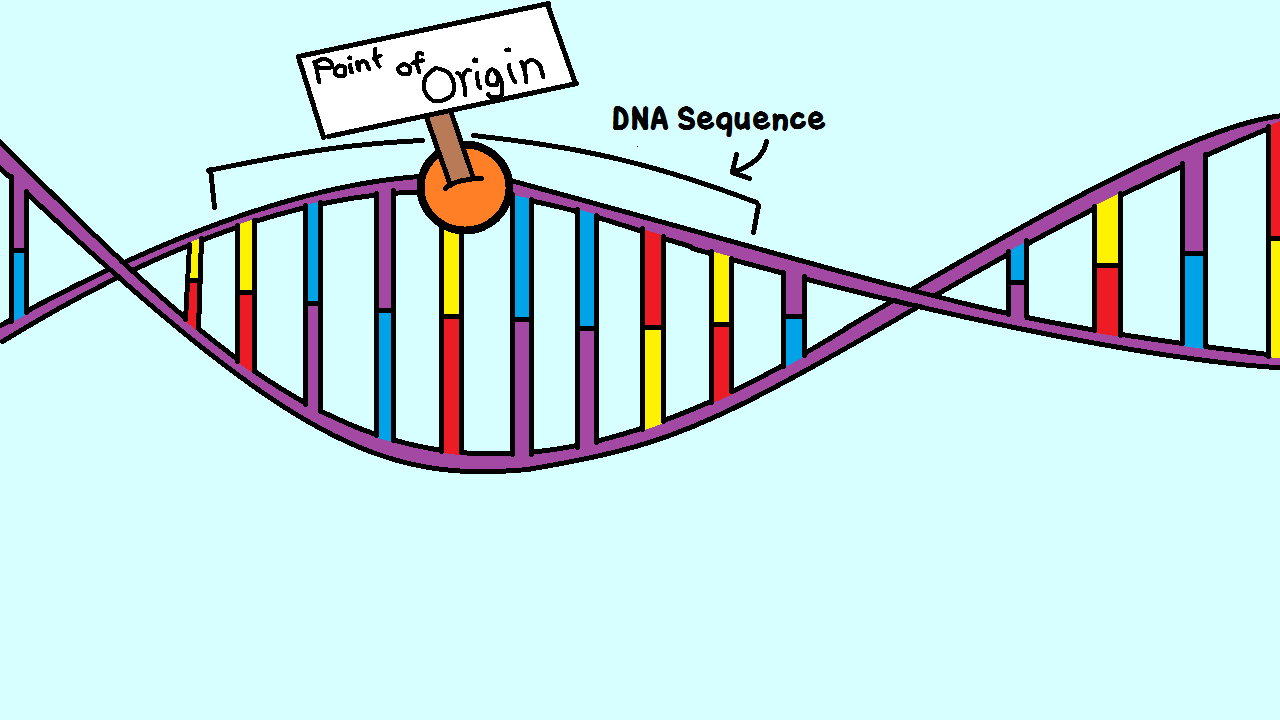
DNA replication is a fundamental process that ensures the accurate transmission of genetic information from one generation to the next. It is an intricate and remarkably efficient mechanism that takes place within cells, allowing for the duplication of DNA molecules. Understanding the origins of DNA replication is crucial for unraveling the complexities of this process.
In this article, we will explore 17 intriguing facts about DNA replication origins. From the fascinating discovery of replication bubbles to the essential role of initiator proteins, these facts shed light on the intricacies and significance of DNA replication origins. So, let’s dive into the fascinating world of DNA replication and explore the mysteries behind its origins!
Key Takeaways:
- DNA replication is crucial for all living organisms, ensuring genetic material is accurately duplicated. It involves specific sites called origins of replication, where the process begins, and is tightly regulated to prevent errors and maintain genome stability.
- Understanding DNA replication origins is essential for studying genetic disorders and diseases like cancer. Ongoing research aims to unravel the complexities of these origins, potentially leading to new therapeutic strategies for targeting DNA replication-associated diseases.
DNA replication is a fundamental process in all living organisms.
DNA replication is the process by which a cell duplicates its genetic material to generate identical copies. It is essential for the growth, development, and functioning of an organism.
DNA replication occurs during the S phase of the cell cycle.
The cell cycle consists of different phases, and DNA replication specifically takes place during the synthesis (S) phase. This ensures that each daughter cell receives a complete set of genetic information.
DNA replication is highly accurate.
The DNA replication process has built-in mechanisms to ensure the fidelity of DNA replication. Enzymes, such as DNA polymerases, proofread and repair any errors that may occur during replication, maintaining the integrity of the genetic information.
DNA replication starts at specific sites called origins of replication.
Origins of replication are specific DNA sequences where the replication process initiates. These sites are recognized by various proteins and enzymes involved in DNA replication.
The number of origins of replication varies in different organisms.
Organisms with larger genomes tend to have multiple origins of replication to ensure efficient and timely replication of their DNA. For example, humans have thousands of origins of replication throughout their genome.
Origins of replication have specific sequences known as replicators.
Replicators are DNA sequences that are essential for the initiation of DNA replication. They contain specific binding sites for replication initiation proteins.
Proteins known as origin recognition complexes (ORCs) bind to origins of replication.
ORCs play a crucial role in the recognition and binding of origins of replication. They serve as a starting point for the assembly of other proteins necessary for DNA replication.
The initiation of DNA replication involves the unwinding of the DNA double helix.
DNA helicase enzymes unwind the double helix at the origin of replication, creating a replication fork where the actual replication process occurs.
DNA polymerases are the enzymes responsible for DNA replication.
DNA polymerases add nucleotides to the newly synthesized DNA strand, following the complementary base-pairing rules. Different DNA polymerases have specialized functions during DNA replication.
DNA replication occurs bidirectionally from the origin of replication.
Once the replication fork is established, DNA synthesis proceeds in both directions from the origin of replication, resulting in two identical copies of the DNA molecule.
DNA replication is a highly coordinated process.
Various proteins and enzymes work together in a synchronized manner to ensure accurate and efficient DNA replication. Any disruption in this coordination can lead to DNA damage or mutations.
Mutations in DNA replication origins can have profound effects on genome stability.
Alterations in the sequences of origins of replication can affect the efficiency and accuracy of DNA replication, potentially leading to genomic instability and diseases such as cancer.
The initiation of DNA replication is tightly regulated to prevent multiple rounds of replication within a single cell cycle.
Checkpoint mechanisms ensure that DNA replication initiates only once per cell cycle, preventing excessive DNA synthesis and ensuring the proper distribution of genetic material to daughter cells.
DNA replication origins can be influenced by various external factors.
Environmental conditions, cellular signals, and DNA damage can affect the activity of origins of replication, regulating the timing and efficiency of DNA replication.
Replicative stress can lead to DNA replication fork stalling or collapse.
When cells face challenges during DNA replication, such as DNA damage or nucleotide depletion, replication forks can stall or collapse. This can lead to genomic instability and the formation of DNA lesions.
DNA replication origins are crucial in understanding DNA replication-associated diseases.
Malfunctions in DNA replication origins have been associated with various genetic disorders and diseases, including certain types of cancer and developmental disorders.
Ongoing research aims to unravel the complexities of DNA replication origins.
Scientists continuously explore the mechanisms and regulation of DNA replication origins to gain a deeper understanding of the processes involved. This knowledge can lead to new therapeutic strategies for targeting DNA replication-associated diseases.
Conclusion
In conclusion, understanding the intricacies of DNA replication origins is crucial in unraveling the mysteries of life itself. The process of DNA replication, starting from its origins, is a fundamental aspect of cellular reproduction and plays a critical role in maintaining genetic integrity. By exploring these 17 intriguing facts about DNA replication origins, we gain deeper insights into the mechanisms that drive life and evolution.From the complex assembly of replication complexes to the formation of pre-replication complexes, each step in the DNA replication process is finely tuned to ensure accurate duplication of genetic material. The identification and characterization of replication origins not only shed light on how cells faithfully replicate their DNA, but also contribute to our understanding of diseases such as cancer, where replication errors can have devastating consequences.By delving into the fascinating world of DNA replication origins, scientists continue to uncover new discoveries and advance our knowledge of the building blocks of life. The study of these origins remains an exciting and rapidly evolving field, promising future breakthroughs that will revolutionize our understanding of genetics and pave the way for innovative medical treatments and interventions.
FAQs
1. What are DNA replication origins?
DNA replication origins are specific sites on the DNA molecule where the replication process starts. These regions are recognized by a combination of proteins that initiate the unwinding and duplication of the DNA strands.
2. How many DNA replication origins are there in a cell?
The number of DNA replication origins varies depending on the organism and cell type. In humans, there are approximately 30,000 replication origins scattered across the genome, ensuring efficient and timely replication of the entire DNA molecule.
3. Are DNA replication origins always the same?
No, DNA replication origins are not fixed and can vary between cell types and even within the same cell. The selection of replication origins depends on various factors, including the specific needs of the cell and the stage of the cell cycle.
4. Can DNA replication origins be mutated?
Yes, DNA replication origins can undergo mutations that affect their function. Mutations in replication origins can lead to replication errors, genetic instability, and can contribute to the development of diseases such as cancer.
5. How do scientists study DNA replication origins?
Scientists use various techniques, such as DNA sequencing and biochemical assays, to identify and study DNA replication origins. These methods help in understanding the molecular mechanisms involved in the initiation and regulation of DNA replication.
Unraveling DNA replication origins is just the beginning of a captivating journey into molecular biology. DNA polymerases play a crucial role in DNA synthesis, ensuring accurate and efficient copying of genetic material. Beyond replication, cell cycle regulation orchestrates the intricate dance of cell division, growth, and development. Exploring these interconnected processes offers a deeper understanding of life's fundamental building blocks and their fascinating interplay.
Was this page helpful?
Our commitment to delivering trustworthy and engaging content is at the heart of what we do. Each fact on our site is contributed by real users like you, bringing a wealth of diverse insights and information. To ensure the highest standards of accuracy and reliability, our dedicated editors meticulously review each submission. This process guarantees that the facts we share are not only fascinating but also credible. Trust in our commitment to quality and authenticity as you explore and learn with us.


